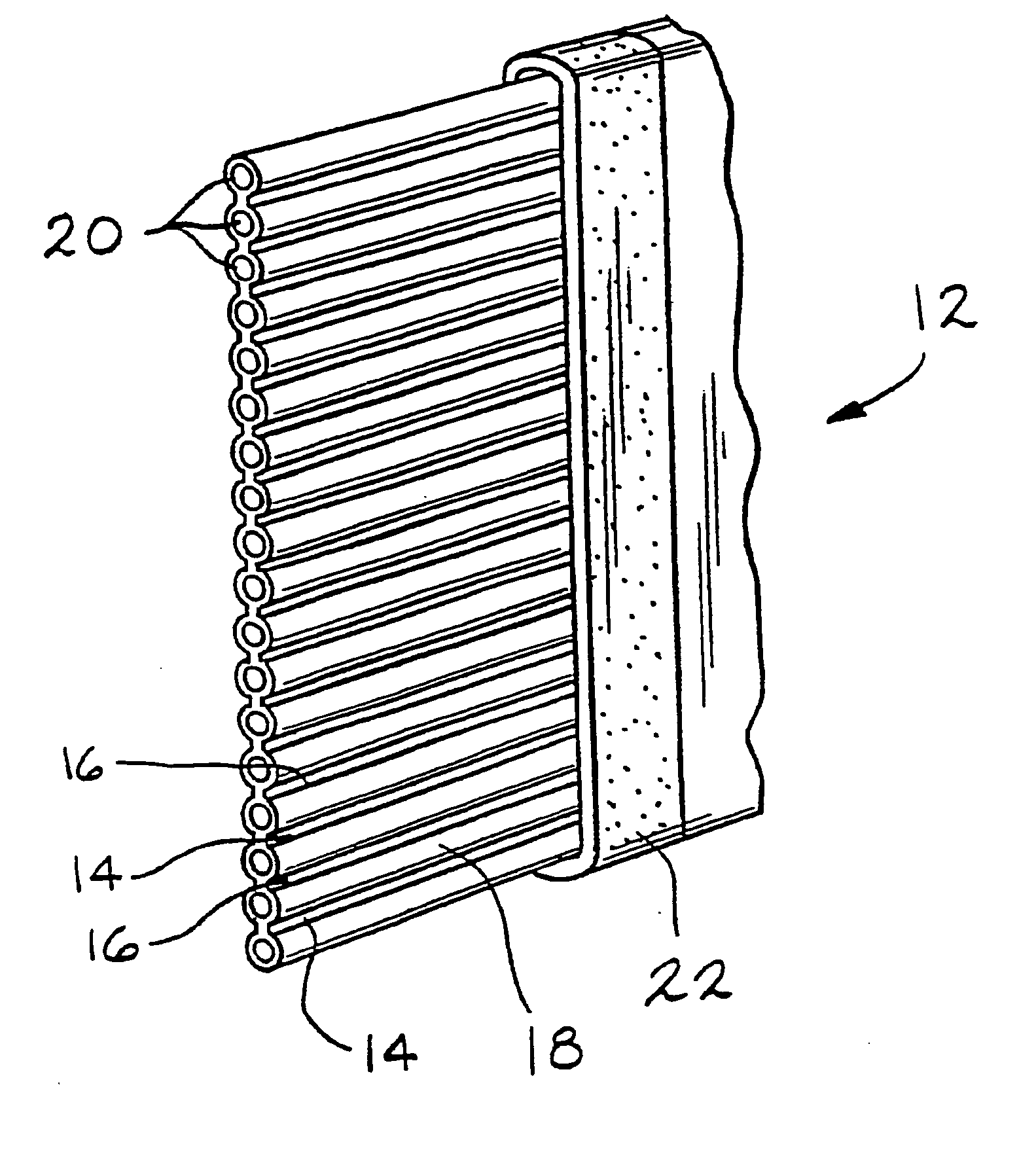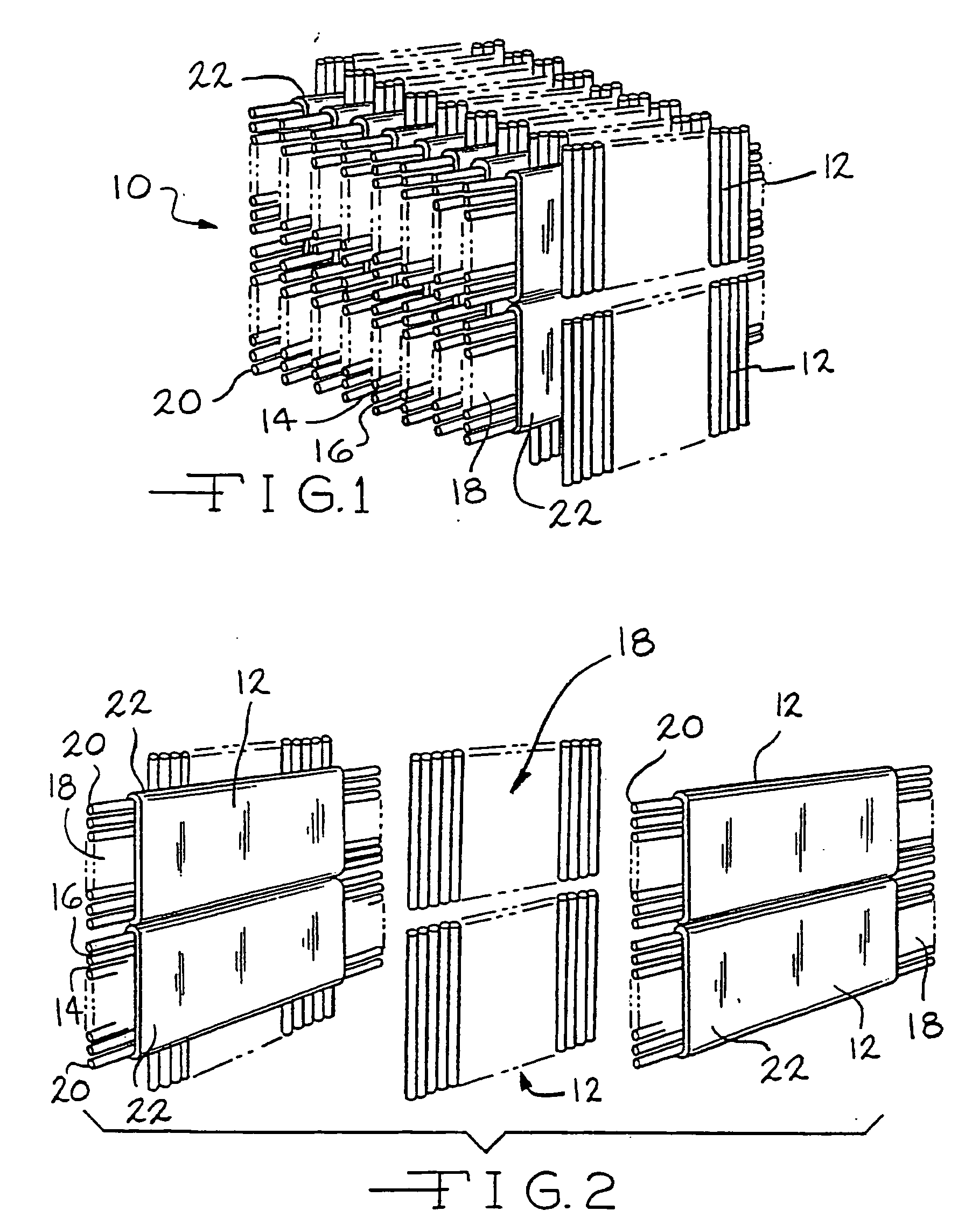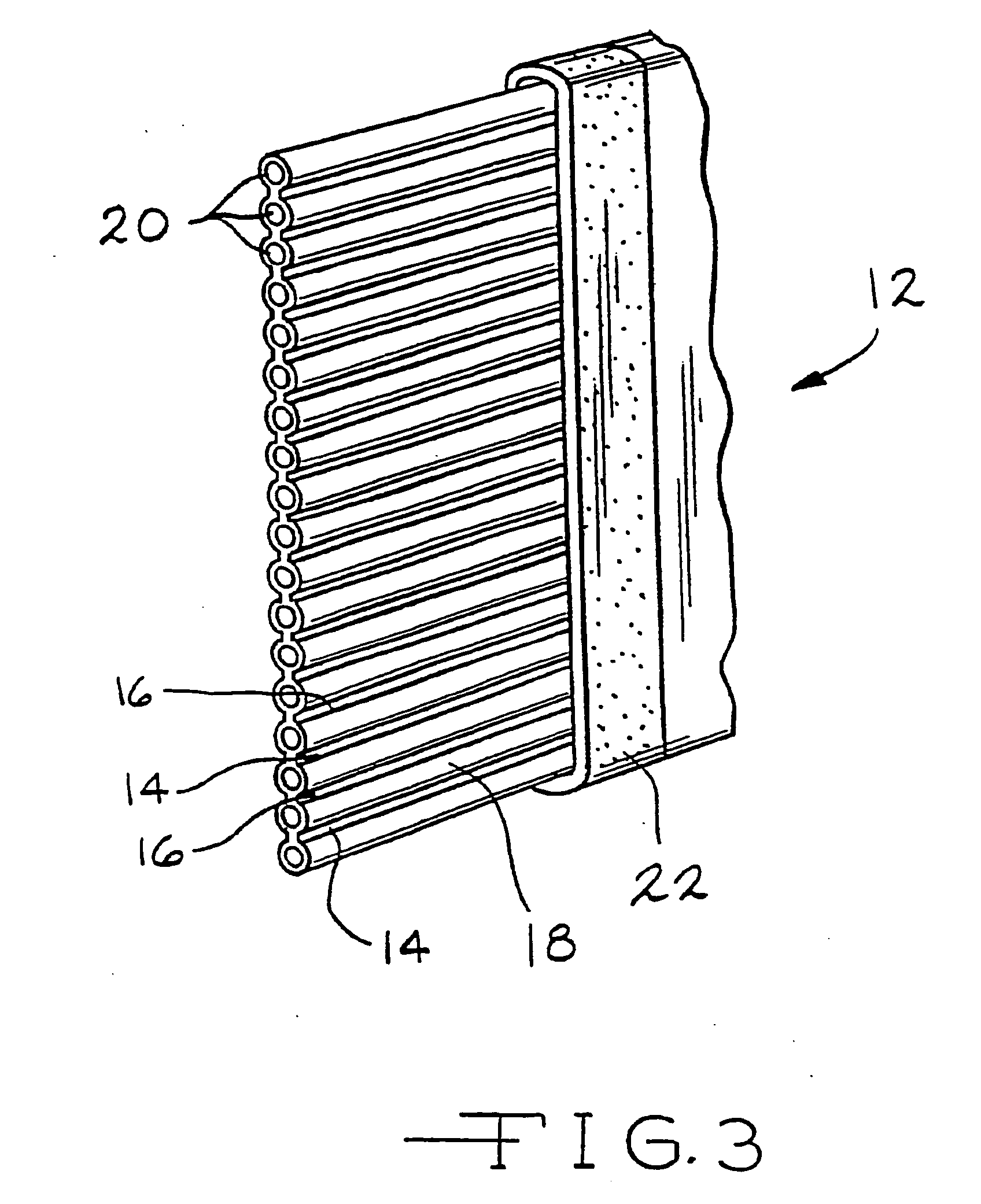Low alkali sealing frits, and seals and devices utilizing such frits
a technology of glass sealing and frits, applied in the field of glass sealing frits, can solve the problems of either sealing or electrolyte sheet, fuel cell stack component thermal stress,
- Summary
- Abstract
- Description
- Claims
- Application Information
AI Technical Summary
Benefits of technology
Problems solved by technology
Method used
Image
Examples
examples
[0033] The sealing blend of this invention will be further clarified by the following examples, showing glass frit composition in mole percent and the total blend composition (glass frit and filler) in wt %.
TABLE 1Base glass:fillerGeneralratioComposition (mole %)FritCategory(wt basis)Base glassFillerPhysical propertiesExample 1Low alkali90:10Li2O4.0Y stabilized zirconia:CTE = 117.8 × 10e-7 / ° C.CaO7.08% Y2O3Soft. pt = 767° C.SrO18.092% ZrO2Sealing temp = 850° C.Al2O33.0orB2O310.0Ca stabilized zirconia:SiO258.012% CaO88% ZrO2Example 2Low100:0 K2O6.0(none)CTE = 100.8 × 10e-7 / ° C.alkali / low(no filler)SrO0Sealing temp = 850° C.silicaCaO22.7Al2O34.0B2O340.5SiO226.8Example 3Low alkali / 80:20K2O6.0Ca stabilized zirconia:Sealing temp = 850° C.low silicaSrO0CaO12.0CaO22.7ZrO288.0Al2O34.0B2O340.5SiO226.8Example 4Low alkali / 80:20K2O6.0LeuciteSealing temp = 850° C.low silicaSrO0K2O16.7CaO22.7Al2O316.7Al2O34.0SiO266.6B2O340.5SiO226.8Example 5No alkali / 100:0 SrO3.0(none)CTE = 71.0 × 10e-7 / ° C.low...
PUM
| Property | Measurement | Unit |
|---|---|---|
| temperature | aaaaa | aaaaa |
| mean particle size | aaaaa | aaaaa |
| temperature | aaaaa | aaaaa |
Abstract
Description
Claims
Application Information
 Login to View More
Login to View More - R&D
- Intellectual Property
- Life Sciences
- Materials
- Tech Scout
- Unparalleled Data Quality
- Higher Quality Content
- 60% Fewer Hallucinations
Browse by: Latest US Patents, China's latest patents, Technical Efficacy Thesaurus, Application Domain, Technology Topic, Popular Technical Reports.
© 2025 PatSnap. All rights reserved.Legal|Privacy policy|Modern Slavery Act Transparency Statement|Sitemap|About US| Contact US: help@patsnap.com



